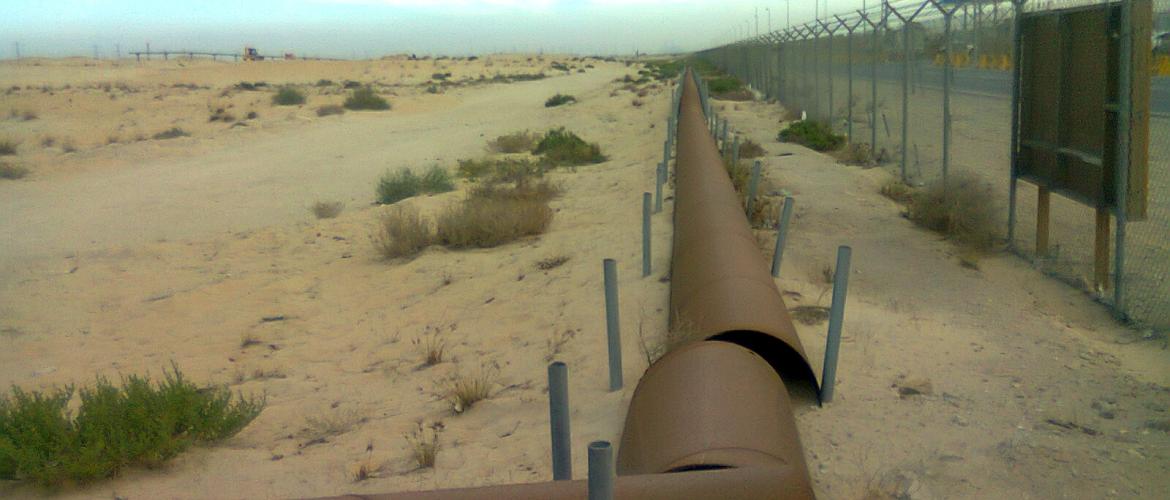Saudi oil stations attacked
May 17, 2019 | Expert Insights

Background
In 2015, Saudi Arabia leading a coalition of nine countries, launched a military intervention in Yemen in response to calls from president Abdrabbuh Mansur Hadi for military support. He was ousted by the Houthi movement due to economic and political grievances and fled to Saudi Arabia. The intervention initially consisted of a bombing campaign on Houthi rebels and later saw a naval blockade and the deployment of ground forces into Yemen.
The war has received widespread criticism and had a dramatic worsening effect on Yemen's humanitarian situation, that reached the level of a "humanitarian disaster. On 1 July 2015 UN declared for Yemen a "level-three" emergency—the highest UN emergency level—for a period of six months
The coalition accused Iran of militarily and financially supporting the Houthis. According to American officials, Iran discouraged Houthi rebels from taking over the Yemeni capital in late 2014, casting further doubt on claims that the rebels were fighting a proxy war on behalf of Iran. A spokeswoman for the US National Security Council said that it remained the council's assessment that "Iran does not exert command and control over the Houthis in Yemen.
Analysis
Yemen’s Houthi rebels carried out multiple drone attacks on Saudi oil facilities, two days after Saudi oil tankers were sabotaged off the coast of the United Arab Emirates.
The drone strikes caused minor damage to one of the stations supplying a pipeline running from its oil-rich Eastern Province to the Yanbu Port on the Red Sea, Saudi Energy Minister Khalid al-Falih said in a statement. A fire that broke out was later brought under control, but the country's state-run oil giant Aramco stopped pumping oil through the pipeline. Falih called the attack "cowardly", saying recent sabotage acts against its vital installations not only target Saudi Arabia but the safety of the world's energy supply and global economy.
A Houthi spokesman, Mohammed Abdul Salam, claimed responsibility for the drone strikes on Twitter, saying that they were a response to Saudi “aggression” and “genocide” in Yemen. Houthi military spokesman Yahya Saree said seven drones carried out the strikes on the Saudi oil installations. "It was a successful operation. We found assistance from people living in Saudi Arabia, and we had excellent intelligence," Saree said. The Houthis have repeatedly launched drone and missile attacks on Saudi Arabia and claimed to have launched strikes on the UAE. The attack has demonstrated that the group was “capable of carrying out qualitative operations on a larger scale deep inside aggressor countries”
Following the drone strikes, Riyadh said oil production and exports from the kingdom were continuing without disruptions. Brent crude, the international oil benchmark rose $1.09 to $71.32 a barrel.
Charles Hollis, managing director of Falanx Assynt, a risk consultancy, said the attack on the stations could be connected to the Sunday tanker assault near the Strait of Hormuz. “The location is not coincidental, with the target underlining that the Straits of Hormuz are not the only vulnerable Saudi oil export route,” he added. “However, the Houthis’ capabilities remain nascent and they are unlikely to be able to significantly disrupt Saudi export capabilities.”A total of four ships were damaged near the Strait of Hormuz, the vital waterway to the Persian Gulf, through which much of the world’s oil flows.
Assessment
Our assessment is that the two pumping stations are over 500 miles from Yemen’s northern border with the kingdom and it wasn’t immediately known where the Houthis launched the drones. It can be noted that these drones have been flown into the radar arrays of Saudi Arabia’s Patriot missile batteries to disable them. It remains difficult to shoot down these drones with either light or heavy weapons. As drones become smaller and quieter, they become easier to move and launch, and harder to detect in operation.
A 2018 report by the United Nations has identified Yemen’s drone, the Qatef, virtually identical in design, dimensions and capability to that of Ababil – T, manufactured by the Iran Aircraft Manufacturing industries.
We feel that sensitive infrastructure could be equipped with systems to detect because physical defences against drone attacks are more challenging both technologically and in terms of cost. In the late ’90s, Romero Lamm developed an algorithm that enabled a tractor mounted camera to tell the difference between cotton plants and weeds. In the aftermath of al Qaeda’s attack on the USS Cole, he helped the US Navy and Coast Guard contractor to develop a robotic vision system that allowed ships to detect and quickly respond to speed boat attacks.








Comments